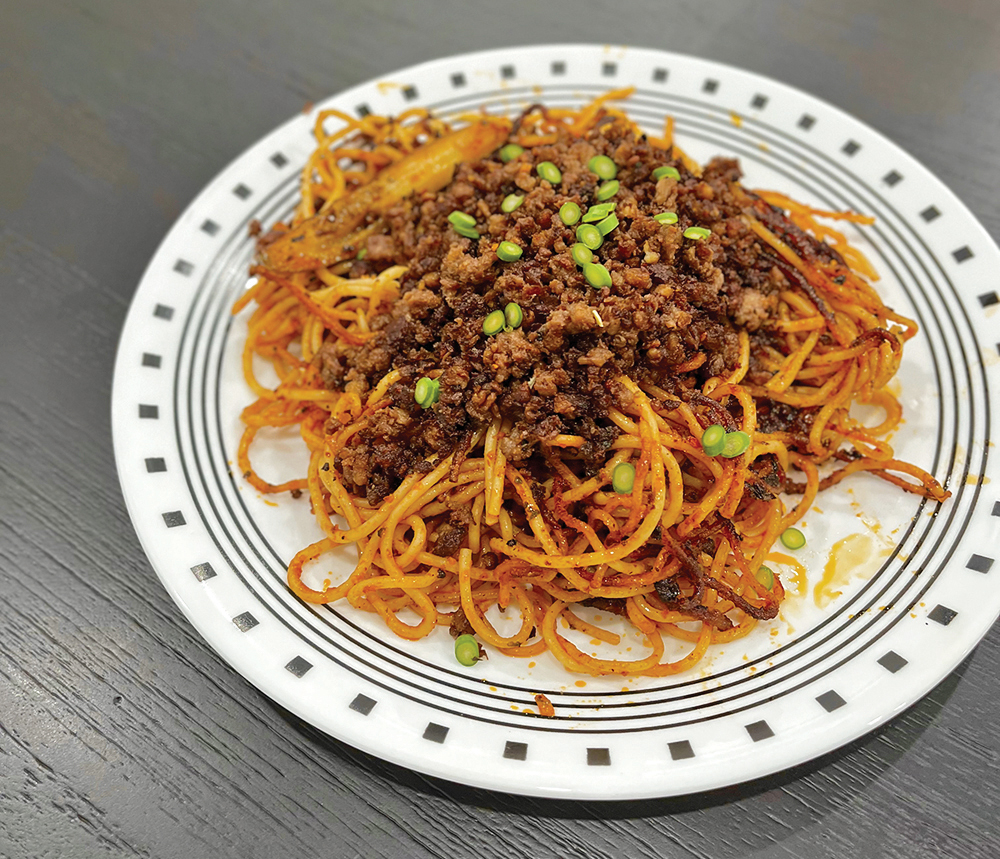
Hello again friends. Last we spoke, (OK, technically I did most of the speaking) I told you how I would help you make your family dinners more delicious without you having to work harder or spend more money. I’m back today (and every month) to keep that promise. Change, however, can be intimidating. Sure, I’d like to get you all to start adding kimchi to your grilled cheese (it’s taste bud altering), and including offal in your regularly recurring proteins (turkey gizzards are grossly underappreciated), but it doesn’t need to be anywhere near that drastic.
One of my favorite ways to hit the upgrade button on a meal is to take a menu standard and punch it up, either by adding flavor bombs that make the dish come alive, or changing the preparation method to add flavor and texture. Just because a dish is familiar doesn’t mean it’s inherently boring and, if it has become uninteresting, it doesn’t need to stay that way.
Flavor bombs are ingredients that are high in glutamate, an amino acid. The taste of this amino acid, and its cousins inosinate and guanylate, are commonly referred to as umami, or the fifth taste. This is the extra flavor you notice in a dry aged steak, or in a two-year-old Parmesan. But flavor bombs aren’t exclusive to high-end foods; it’s also present in plenty of lower budget items, like tomatoes, soy sauce, miso and egg yolks. In fact, one of my favorite ways to upgrade the flavors of a braised roast is to add a tablespoon of soy sauce or miso to the liquid.
Similarly, changing the preparation method can unlock flavors and textures you never experienced in that context and make you see the dish in a whole new light. In my last column I told you how heat can create flavor by caramelizing sugars and browning proteins. Well, the primary obstacle to creating those flavors is moisture. Water is the enemy of flavor, and removing it will often reveal something better. It’s like orange juice or Tide pods. Once the water is removed what you have left is concentrate. The product hasn’t changed, but now it’s stronger, concentrated. It’s the same with flavor. The more water you remove, the more you’ll taste. As an added benefit a reduced sauce can now also brown. Just like a wet steak won’t sear, a watery sauce won’t caramelize.
That brings us to today’s recipe. While meatballs and spaghetti might sound like kid food or something familiar and uninteresting, the truth is it can be something exciting, something you look forward to; all it needs is a little makeover. Forget the preparation you’re familiar with and instead maximize the flavors and textures. Remember how I said tomatoes are a flavor bomb? Well, the problem is that they have far too much water in them for you to notice; even tomato sauce isn’t concentrated enough to give your food that umami kick. Similarly, meatballs often find themselves sitting in that tomato sauce, steaming and braising their way away from the browning flavors we normally chase with beef, be it a seared steak or a smashed burger.

Instead, I like to maximize the flavor of both by reducing and caramelizing the tomato sauce and by browning as much of the beef as possible. In place of boiling pasta and adding it to the sauce, I cook the pasta in the sauce, concentrating and browning it. Rather than forming meatballs, I brown and crumble the beef, saving time and adding surface area. When combined you’ll have these rich beef and tomato flavors in every bite. As an added benefit the bottom of the pasta will get crispy like a Persian tahdig or Spaghetti al Assassina, creating textural elements where none existed before. All in all, meatball and spaghetti night just got upgraded.
‘Upgraded’ Meatballs and Spaghetti
For the meat:
- 1 pound ground beef
- 1 tablespoon soy sauce
- 1 tablespoon garlic powder
Brown the beef in a wide bottom sauté pan. Use a spatula to break up the chunks. Once everything is no longer pink, pour off most of the fat and reserve. Add the soy sauce and garlic and continue to cook until dark brown. Remove and set aside.
For the pasta:
- 2/3 pack of spaghetti
- 1/2 jar of your favorite tomato sauce (or 1/2 jar of passata seasoned to your taste)
- Rendered beef fat
- 1 cup of water
- Salt and pepper to taste 1/2
While your meat browns, soak your pasta in water. This will reduce the amount of liquid it needs to absorb and make it flexible so you fit it into your pan without breaking it.
Using the same pan (let the pan cool or it’ll splatter), add the tomato sauce to the pan along with the rendered beef fat and bring to medium heat.
Add the spaghetti and lower the heat. Try to get it into a single layer covering the entire bottom and don’t move it around. This will help it brown. When the sauce turns almost solid, add water 2 tablespoons at a time until it’s a liquid again and keep spooning the sauce over the pasta so it’s covered.
Once it’s cooked through, plate your spaghetti, don’t worry if some stick, and top it with your browned ground beef.
Jeff Mosczyc, better known by his Instagram handle @foodkidsandsleep, is a recipe developer and strong opinion haver. You can hear more of his recipes and thoughts on food here, on his page and really anywhere within his earshot.












